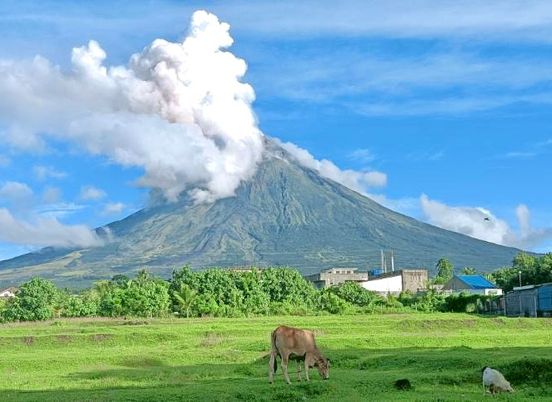
Legazpi City: The Mount Mayon Volcano disgorged a cauliflower like type of ash at 7 a.m. on Monday, July 10.
Shortly after the volcano ejected the pyroclastic density current, Philippine Institute of Volcanology and Seismology (Phivolcs) released a bulletin at 8 a.m. stating that there is an increased activity at the volcano’s summit crater.
According to Phivolcs report, since 5 p.m. on Sunday, July 9, at least 33 pyroclastic density currents or PDCs have been generated by the dome collapse.
The PDCs travelled for approximately one to four minutes down the Mi-isi (south) and Bonga (southeastern) gullies as far as 3.3 kilometers from the crater.
Satellite monitors detected a pronounced increase in SO2 emission on Monday, whereas SO2 emission measured by campaign survey averaged 943 tonnes/day on Sunday. Measured volcanic gas flux has only been slightly above background for the past three days and remains much lower than the typical ranges of eruption gas flux from Mayon.
“Short-term observations from EDM and electronic tiltmeter monitoring show the upper slopes to be inflating since February 2023. Longer-term ground deformation parameters based on EDM, precise leveling, continuous GPS, and electronic tilt monitoring indicate that Mayon is still inflated, especially on the northwest and southeast,” the Phivolcs said.
For a month of effusive eruption, Mayon has ejected close to 8 million cubic meters of volcanic materials.
Dr. Paul Alanis said that once the lava and pyroclastic materials from the crater of Mayon reach the 6-km radius danger zone, they will ask the local government unit to enforce the evacuation of residents living within the 7- to 8-km radius.
Currently, there are 5,454 families or 19,233 individuals staying in temporary camps in the municipalities of Guinobatan, Daraga, Manito, Sto. Domingo and Malilipot and in the cities of Legazpi And Ligao.
STORY/ PHOTO SOURCE: Rhaydz Barcia (Manila Times)





